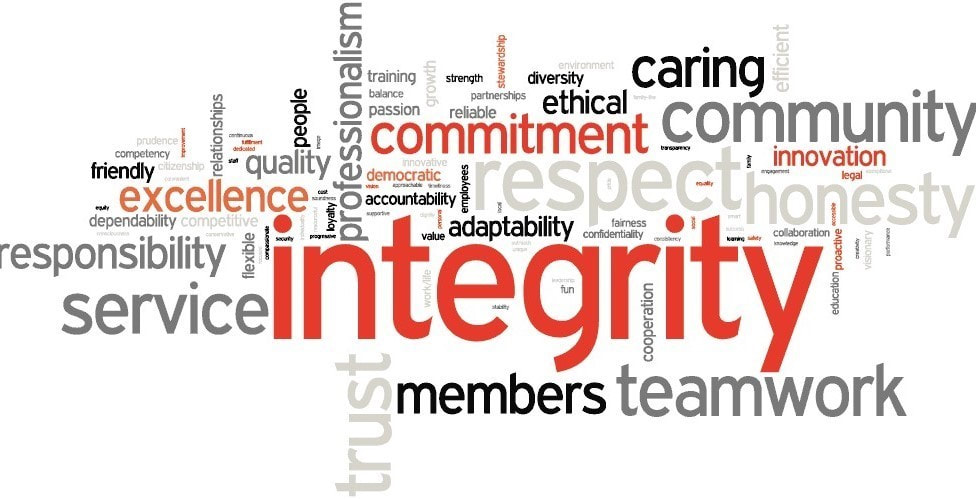Exclusive Access Granted To Our Blog!
|
The best way to think about the customer experience is as a story. This is how your customer experiences it. The story starts with their first contact with your brand, whether directly or indirectly. The plot thickens as they learn about your products or services and begin interacting with you.
The plot takes a major turn when the customer decides to buy something from you, and the story continues as the customer's relationship with your business moves forward to future purchases. Think of the Customer Experience as a Story When we're evaluating the efficacy of our methods, we tend to look at data. This data can come to us in the form of statistics like sales data or web analytics, or from customers themselves in the form of survey results. But this data can't fully convey the customer experience as the customer lives it. This data isn't useful because it doesn't convey the totality of the customer experience, and that's exactly what it is – a totality. Rather, this data gives you only the specific data it can, such as how much web traffic you're getting or whether or not your customers think your response time is fast enough. If you're lucky, you'll get a few sentences of feedback, but even this isn't enough. The customer experiences their journey with your company as a story. Like a novel or movie, each scene plays a part in the overall story. In order to understand what's working well or what's going wrong with your customer experience, you need to know this entire story and how all of the small parts fit into it. Know Your Customer's Story The best way to learn your customer's story with your brand is to put yourself in your customer's shoes and write out this story. We do this through mapping the customer experience. A customer experience map starts with the first contact you have with your customer and works its way through all of the story's "scenes," which are the individual touch points you have with the customer. A customer experience map is something like an infographic which shows the entire story. You can take in the big picture at a glance, but it also shows you all of the relationships between the different parts. You can more easily see where problems might occur and areas where you can make improvements in order to maximize the experience. There are many different ways to approach mapping the customer experience, but it should always be in story form. You should understand your company's customer experience through the customer's eyes. About The Author Pat Simes is a Business Strategist, blogger and Founder of Innovative Business Solutions and Innovate Academy. She currently resides in the Midwest and is committed to inspiring and empowering entrepreneurs to transform their vision to reality.
0 Comments
The journey a customer takes with your company is very emotional. Emotion plays a key role in the customer experience and you should take it into consideration when mapping and planning your customer experience. Why Emotions Are Important The reason emotion is important is that it's a vital part of decision-making. We live in a complex world with many things to consider. In order to make a purchase decision rationally, you would need to carry out a detailed cost-benefit analysis of everything. Most people don't do this and instead make decisions based on emotions, which provide a kind of shortcut. Often, a purchase decision is made because it just feels right. Emotions also play a key role in motivation. How does a customer know when the time is right to finally make a purchase? For most of us, what drives us to act is the emotion we feel about a purchase decision. Emotions Come from the Customer Experience When making purchase decisions, the emotions used are based on everything that has transpired between the customer and the business. In other words, these emotions are shaped by the total customer experience. In other words, the sum total of how a customer feels about your business, which is a direct result of what happens at each touch point, is very important. Emotions Also Create the Customer Experience The fulfilment of these emotional expectations is also important for the customer experience. The customer expects to feel a certain way at different stages of the journey. After purchase, for example, they want to feel fulfilled and confident that they made the right purchase. Subtle changes can have an emotional impact on your customers. In Paco Underhill's book "Why We Buy," there is a case where the feel of the carpet in a department store affected customer buying behavior. Small things like this can work on a subconscious level. Different Emotions for Different People Which specific emotions drive decision making in your customers varies from person to person, or in this case, from target market to target market. Exactly which emotions are most critical depends on many things, including the type of products or services you're offering. The need for peace of mind is important for people buying software security packages. Meanwhile, feelings of excitement and self-expression may be more important for car buyers. The key is to conduct research in order to discover which emotions are important in the experience for your customers. Throughout the experience you offer your customers, you should look for these emotions and identify them. This is part of maximizing the experience. About The Author Pat Simes is a Business Strategist, blogger and Founder of Innovative Business Solutions and Innovate Academy. She currently resides in the Midwest and is committed to inspiring and empowering entrepreneurs to transform their vision to reality. What happens if a customer's experience with your company isn't aligned with your stated core values? It usually results in the customer heading somewhere else.
Let's say that a customer buys from a company's whose stated core value is to put the customer first always. There's a problem with the product the customer bought but it doesn't quite qualify for a refund under the warrantee. Despite the fact that the customer isn't getting the value they expected from the product, the company does whatever it can to deny the refund. Clearly, the company doesn't put the customer first in a case such as this. Every business should make sure its values and experience match. If there's a disconnect between your stated core values and the service you actually deliver, it's likely to cost you a great deal in customer trust. If you fall short of customer expectations, you don't create a good customer experience. The ideal customer experience sets customer expectations and then exceeds them. Your values, your mission, and everything else you say about your company should be exceeded by the actual value you deliver. When you do this, you impress your customers and this has major psychological benefits. How Does Your Customer Experience Measure up? The only way to figure out whether your customer experience is aligned with your core values is to view the situation from your customer's point of view. Take each touch point you have with your customers and ask yourself, "Does this measure up to my company's core values?" Touch points include any kind of direct communication you have with your customer, such as social media updates, email messages, store visits, and follow-up care. There are also indirect touch points, which include what your customers hear from others about you. Start by identifying all of these touch points. Then, go through each one and run it through your core values. Let's take the example of Starbucks. Starbucks' core values are its five principles: "be welcoming, genuine, knowledgeable, considerate, and involved." In order to present a consistent customer experience that aligns with these values, Starbucks needs to ensure that every interaction with customers presents the company and all of its people as welcoming, genuine, knowledgeable, considerate and involved. Beyond Customer Service Every aspect of how your business is run is manifested in the customer experience. The way you deal with customers should be aligned with your core values, but so should every other aspect of your company, from the internal processes you use in creating or delivering your products, to the way you communicate with your employees. When everything is aligned, it creates a strong corporate culture that embodies these values, and customers can see this. It can be a long and involved process, but it's essential that you deliver on these values. About The Author Pat Simes is a Business Strategist, blogger and Founder of Innovative Business Solutions and Innovate Academy. She currently resides in the Midwest and is committed to inspiring and empowering entrepreneurs to transform their vision to reality. Is the actual experience you deliver your customers in-line with the experience you're trying to deliver? There's only one sure way to know and that's to conduct research. You need real, objective data from your customers on which to base decisions. Your own assumptions aren't enough. Here are 8 ways to gather the research you need.
Scour Social Media Search your name as a keyword on popular social media sites like Facebook and Twitter. Look for positive and negative comments about your brand. These comments will tell you whether or not you're living up to customer expectations or not. Read Reviews and Ratings Find your listing on review and rating sites. Read reviews and see what feedback customers wrote about their experience with your company. For negative reviews, reply and ask for clarity or ways you can further help them. Ask Directly Come right out and ask. Offer a comment card or surveys. Offer an incentive such as a discount or freebie as enticement. The best time to ask for feedback is after the customer has bought and used the product. Make seeking feedback part of your follow-up process. Carry out Focus Groups While it requires a bit more investment of time and resources, focus groups are a great way to learn about the experience directly from customers. Invite select customers and lead a discussion about their experience dealing with your company. Website Analytics Website analytics offer an indirect way of evaluating the customer experience. If a large number of visitors come to your site but disappear without signing up, buying, or otherwise engaging, this could mean that there's a disconnect in the experience there. Communications Monitoring Monitor communications between employees and customers to see where there might be problems. This can also help you identify areas where employee training is lacking or where ongoing training is necessary. Employee Focus Groups It may also be useful to hold employee focus groups. In these groups, you can talk about your experiences with customers. Employees can talk about what they feel were successes or failures in the customer experience based on customer feedback or behavior. Encourage Interaction Always look for opportunities to interact naturally with your customers. The more you have interactions with them, the more likely you are to glean insights on how they view the experience with your business. This research should be ongoing. No customer experience is perfect and all can use some fine-tuning. Through the objective data you obtain during this research, you can identify areas of weakness for improvement. About The Author Pat Simes is a Business Strategist, blogger and Founder of Innovative Business Solutions and Innovate Academy. She currently resides in the Midwest and is committed to inspiring and empowering entrepreneurs to transform their vision to reality. |
AuthorPat Simes Archives
July 2024
Categories
All
|




 RSS Feed
RSS Feed